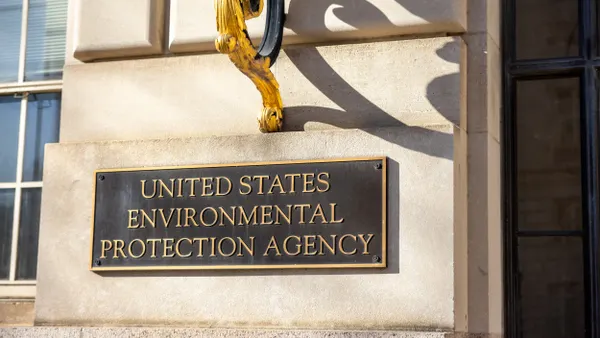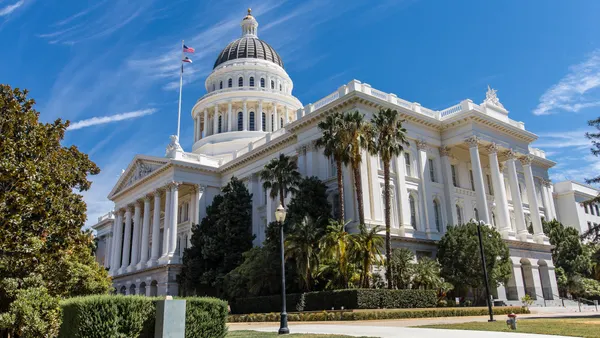In the months following Hurricane Maria's historic landfall on Puerto Rico in 2017, telecommunication capabilities across the region were virtually wiped out. On average, households went 41 days without cellular coverage, according to a study in The New England Journal of Medicine, though many communities lacked reliable access to the internet and cellular service for nearly a year after the storm.
The lack of basic resources, including cellular access, led to fatalities as victims were unable to connect with emergency response teams. The aforementioned study found that on average, 8.8% of homes reported they were unable to reach 911 services, which begs the question: How many lives could be saved if connectivity was always available, even through a destructive storm?
That question is the driving force behind Project Owl, an internet of things (IoT) and software solution designed to improve communication and connectivity in the face of natural disasters. In fall 2018, Project Owl took home a grand prize of $200,000 from IBM's inaugural Call for Code competition, which challenged developers from around the world to create solutions that would help communities improve natural disaster preparedness, response and recovery.
While Project Owl’s mission to improve connectivity during and after a natural disaster wasn’t necessarily unique to the competition, the team’s method of doing so was a moonshot: It centered around small IoT devices called "ducks" dropped into networked clusters called "clusterducks," and an Organization, Whereabouts and Logistics (OWL) incident management system that serves as a cloud-based communications platform for the ducks.
"Through these little IoT devices, we can basically turn on a really low-level internet in geographies that might otherwise have no electricity or communication," Bryan Knouse, a self-taught developer and one of the leads on the project, told Smart Cities Dive. He explained the obstacles that are created when communications infrastructure is destroyed during an event like a hurricane, and the ripple effect that has on coordinating government officials, response teams and those in need of immediate assistance. "During a disaster, chaos and misinformation is pervasive," he said.
Not only did this goal to alleviate chaos and misinformation lead the team to win the competition, but five months later, Project Owl achieved the true grand prize: deploying the system in disaster-ridden Puerto Rico.
Building Project Owl
Integrating technology into disaster preparedness is far from a new practice, as tech-focused companies like Microsoft, AT&T and Cuebiq have built entire departments and initiatives around developing emergency response capabilities.
"Advancements in tech are unlocking new insights previously unknown to public agencies, nonprofits and researchers," said Brennan Lake, director of Cuebiq’s Data for Good program, in an emailed statement to Smart Cities Dive. Similar to IBM's Call for Code, the Data for Good initiative encourages data-driven solutions for natural disaster response and preparedness, among other areas of smart city innovation. "Location intelligence, for example, enables the identification of population mobility trends and how they change as a result of a disaster. That includes whether residents stay or evacuate, when they return, transportation choices … and types of destinations."
However, unlike systems from these corporations, the Project Owl team didn't have venture capital or corporate backing when it began building its product — only the knowledge and resources shared among each other and others in the startup community.
Through various networking opportunities — and some fortuitous introductions over Slack — Knouse connected with Magus Pereira, Nicholas Feuer, Charlie Evans, and Taraqur Rahman to form the Project Owl team. The group of like-minded individuals was intrigued by the Call for Code challenge, with some having been personally affected by hurricanes in recent years. Evans, who is based out of Houston, lived through Hurricane Harvey in 2017, while Pereira experienced Hurricane Florence while living in North Carolina in 2018, during the time of the competition.
"Even if you haven’t directly been affected by [a hurricane], it's almost indirectly impactful when you constantly see on the news that all of this crazy crap is happening around the world," Knouse said.
That impact drove the group to develop the solutions over just a few months, using Slack as a main form of communication. Knouse said the team's remoteness wasn't an issue when developing the product. "There is a value to open sourcing some of the initiative of your company, that if you limit yourself to the people that can sit in your office, you're limited to the talent and the creativity that's within the room, so to speak," he said.
Dropping ducks in the disaster zone
After winning the Call for Code challenge, the team was awarded with open source project support from The Linux Foundation, as well as solution implementation support through IBM's Code and Response initiative. In March, the Project Owl team capitalized on that support by taking a large-scale pilot trip to Puerto Rico, where they, along with IBM staff, deployed over 63 ducks to cover two square miles.
Knouse likened the experience of seeing the technology working in the target environment to Elon Musk watching his rockets take off.
"Musk has said before, like, 'Every time one of the rockets takes off, we think yeah we did a ton of work, it cost a lot of money, but I still say to myself, holy crap it actually works.' And it’s kind of the same with our technology," Knouse explained. "Trying to bring this new inventive technology to bear, especially in such a small, simple design, it’s something that once you’re in the weeds of these things, you see the thousand different ways it’s going to catastrophically fail."
The weather did play a challenging factor in the deployment, as the temperature and humidity sometimes affected the connectivity. "There is a lot of humidity in the air, which affects radio frequencies, and also a lot of the buildings here are made out of concrete so it's probably one of the most difficult areas to do testing with radio frequency technologies," said Feuer in a documentary on the project.
However considering Puerto Rico's high population density and its topography of mountains, hills, plains, jungles and coastline, the initial test proved the overall success of the product. "If we can prove that it works in all these regions, there's a good chance it'll work in a lot of others as well," Knouse said.
Project Owl’s next flight
Since developing their solution, Project Owl has grown to a team of nearly 70 people from nearly every continent, all working together to advance the capabilities of communications infrastructure.
Knouse said the team is eager to execute more field deployments following the success of the Puerto Rico pilot. The team is headed to Houston in a few weeks to "do a much larger, more sophisticated deployment" that will also help streamline deployment practices, he said. From there, Project Owl will head to Alabama to work with the Department of Homeland Security on a field experiment, then to Washington state to work with first-responder groups.
The ultimate goal is to have this solution set up in communities before disaster strikes, however getting to that level of production and deployment will take some time. "Pre-deployment I think would be the advantageous way to do it. However we don't have the capacity to deploy a duck in every single square mile in the United States right now, it's just not possible," Knouse explained.
Until then, Knouse hopes to continue maxing out the capabilities of the Project Owl technology and connecting with in-need communities around the world.
"Billions of people, half the Earth doesn't have access to, forget broadband, even basic internet ... If we're still around in a couple of years, this might not just be a way to bring back networking after natural disasters. We might have found ourselves working on a better type of internet technology for the world in the years to come and we're really excited to continue to push the technology, what it can do, make it bigger, faster, stronger, cheaper and easier to deploy around the world," Knouse said. "That's really what we're focused on: starting small — well, relatively speaking — with hurricanes in the continental United States, with our eyes looking toward the future."










